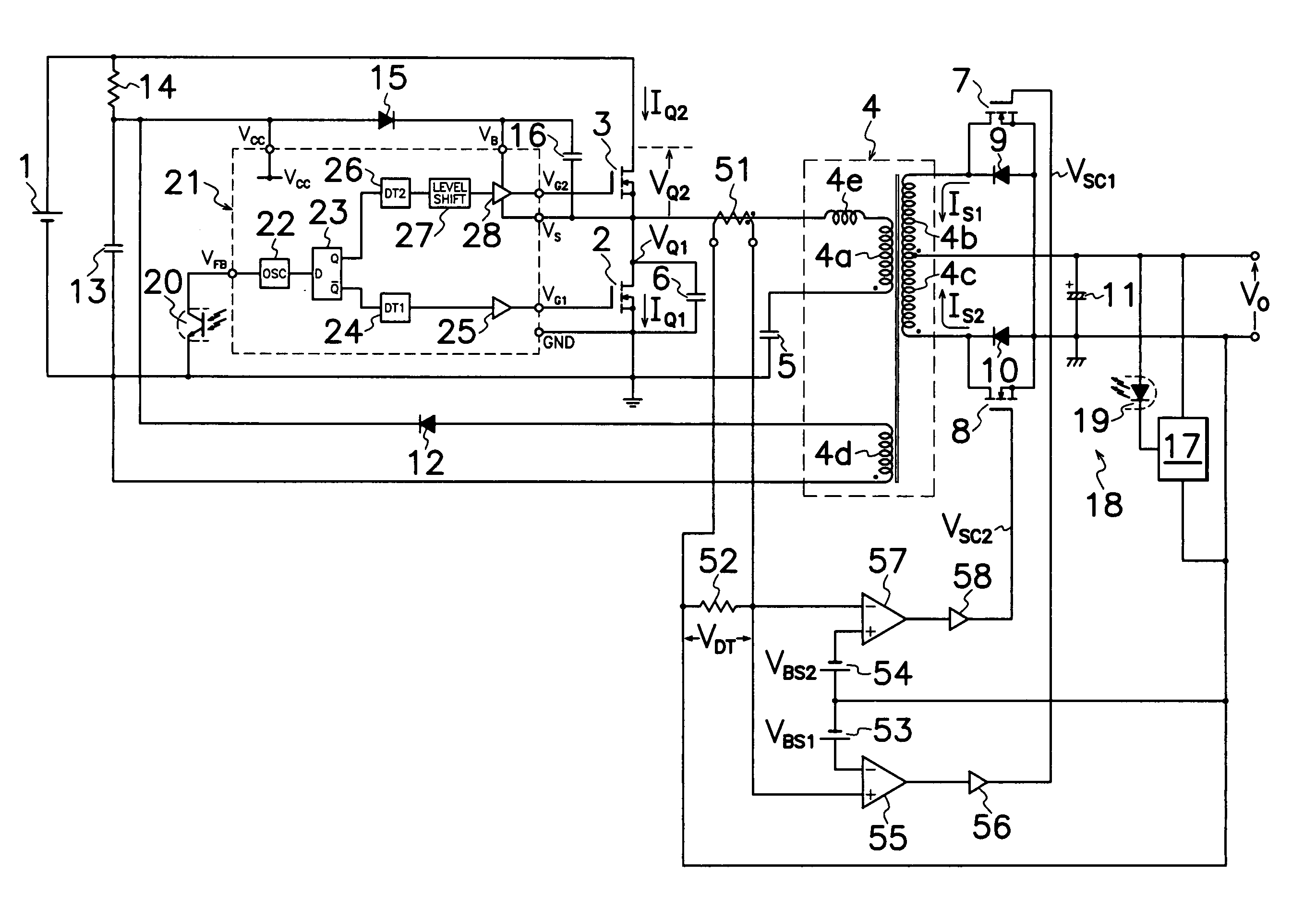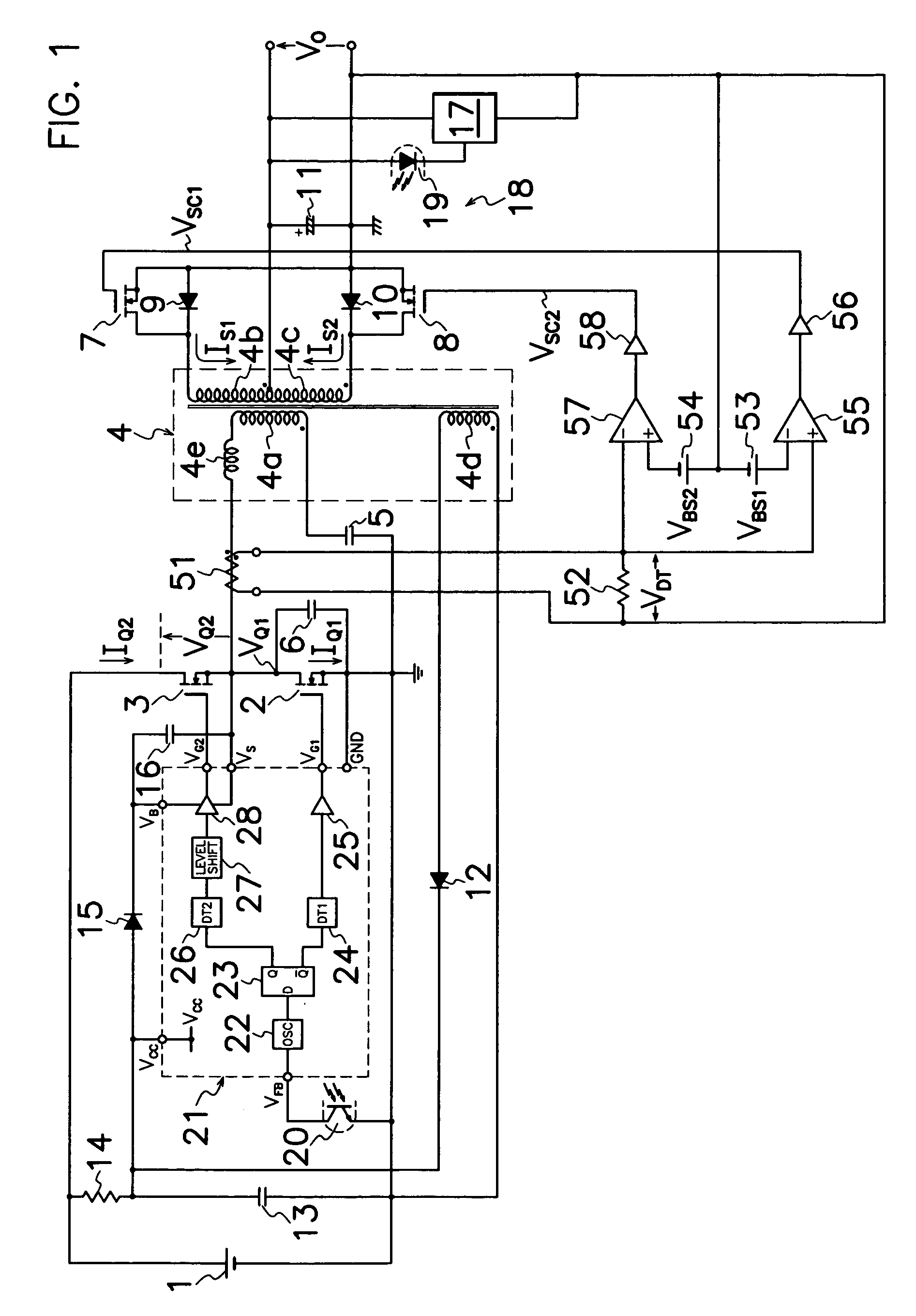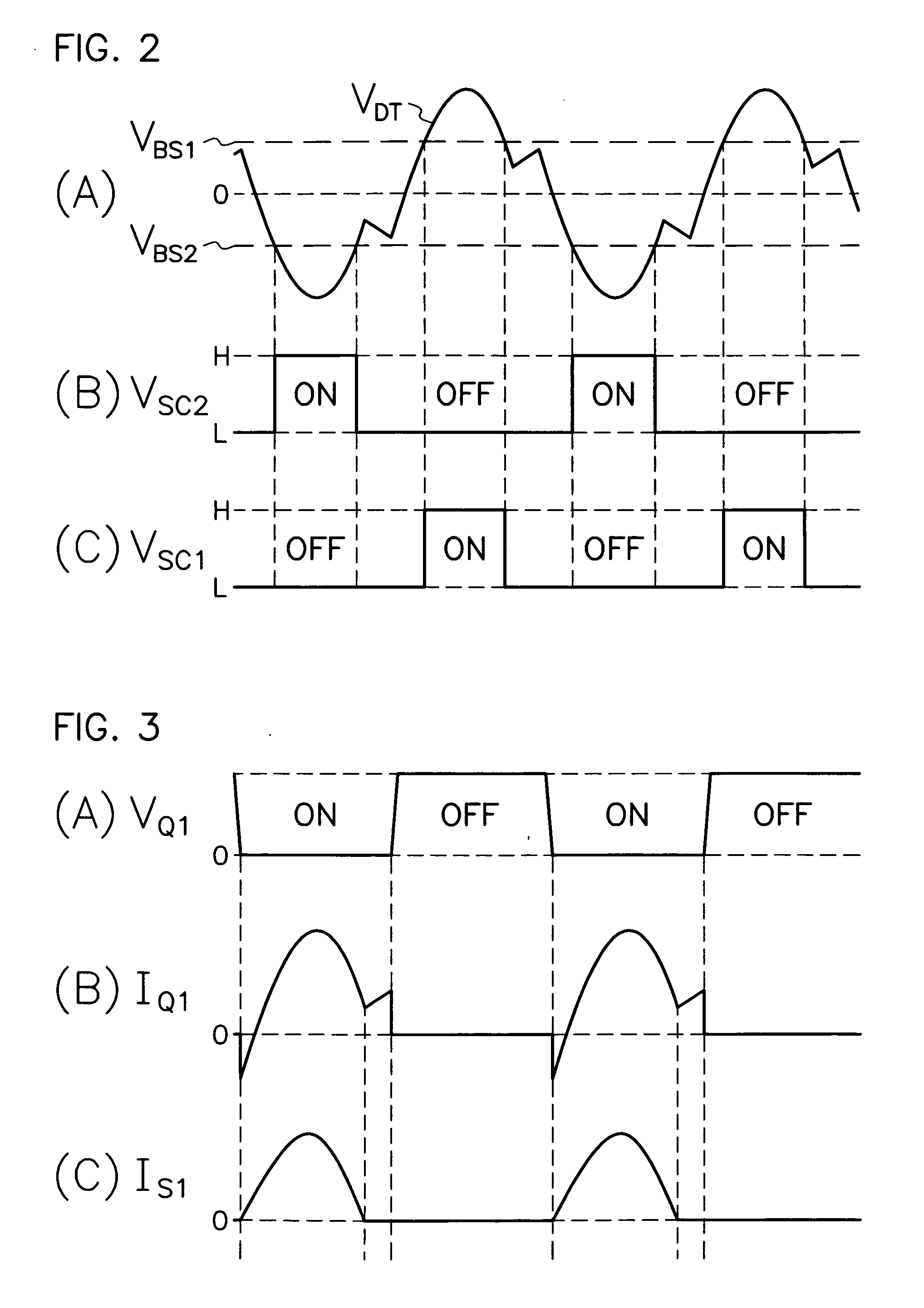Synchronous commutation dc-dc converter
a technology of synchronous commutation and converter, applied in the direction of electric variable regulation, process and machine control, instruments, etc., can solve the problems of reducing the conversion efficiency of dc-dc converter, and achieve the effect of improving conversion efficiency, preventing power loss, and efficiently driving rectifying switching elements
- Summary
- Abstract
- Description
- Claims
- Application Information
AI Technical Summary
Benefits of technology
Problems solved by technology
Method used
Image
Examples
first embodiment
[0033] As shown in FIG. 1, the DC-DC converter of synchronous rectification type according to the present invention, comprises a current detection transformer 51 as current detecting means for detecting electric currents IQ1, IQ2 flowing through primary side circuit of a transformer 4; a current detecting resistor 52 for converting electric current detected by detection transformer 51 into a corresponding voltage VDT; first and second DC bias power supplies 53 and 54 as biasing means for producing bias voltages VBS1 and VBS2 higher than voltage corresponding to excitation current through transformer 4; a first comparator 55 as first comparing means for producing a first synchronous drive pulse signal VSC1 to turn first rectifying MOS-FET 7 on when detection voltage VDT by current detecting resistor 52 to non-inverted input terminal + of first comparator 55 exceeds a bias voltage VBS1 of first DC bias power supply 53 applied to inverted input terminal − of first comparator 55; a firs...
third embodiment
[0043] the DC-DC converter of synchronous rectification type shown in FIG. 8, comprises, in addition to the converter shown in FIG. 4, an operational amplifier 60 as a synchronous signal generator for producing pulse signals VPL synchronously with frequency of voltage produced in secondary winding 4c of transformer 4; and an integration circuit of a resistor 61 and integral capacitor 62 for producing ramp signals VRP whose inclination is inverted every half cycle of pulse signal VPL from operational amplifier 60 wherein a junction of resistor 61 and integral capacitor 62 is connected to a reference potential side (the left end in FIG. 8) of current detecting resistor 52. Inverted and non-inverted input terminals − and + of operational amplifier 60 are connected respectively to secondary winding 4c of transformer 4 and ground in secondary side circuit. In operation, operational amplifier 60 produces rectangular pulse signals VPL of the alternating polarity shown in FIG. 9(B) with fre...
PUM
 Login to View More
Login to View More Abstract
Description
Claims
Application Information
 Login to View More
Login to View More - R&D
- Intellectual Property
- Life Sciences
- Materials
- Tech Scout
- Unparalleled Data Quality
- Higher Quality Content
- 60% Fewer Hallucinations
Browse by: Latest US Patents, China's latest patents, Technical Efficacy Thesaurus, Application Domain, Technology Topic, Popular Technical Reports.
© 2025 PatSnap. All rights reserved.Legal|Privacy policy|Modern Slavery Act Transparency Statement|Sitemap|About US| Contact US: help@patsnap.com



